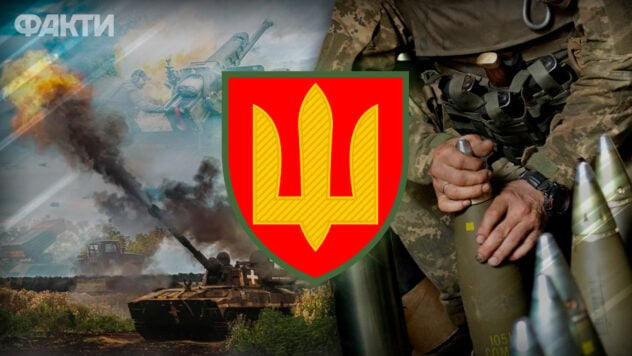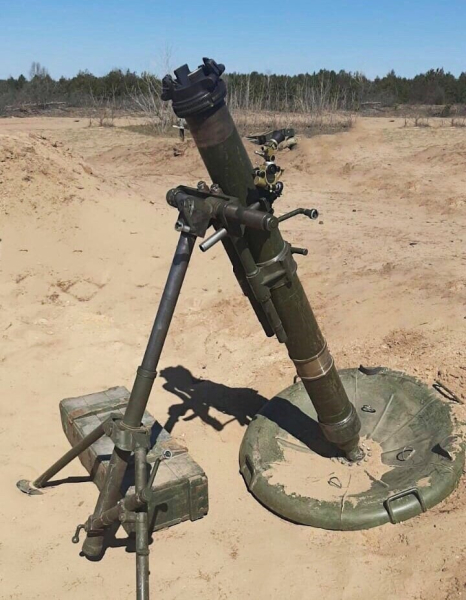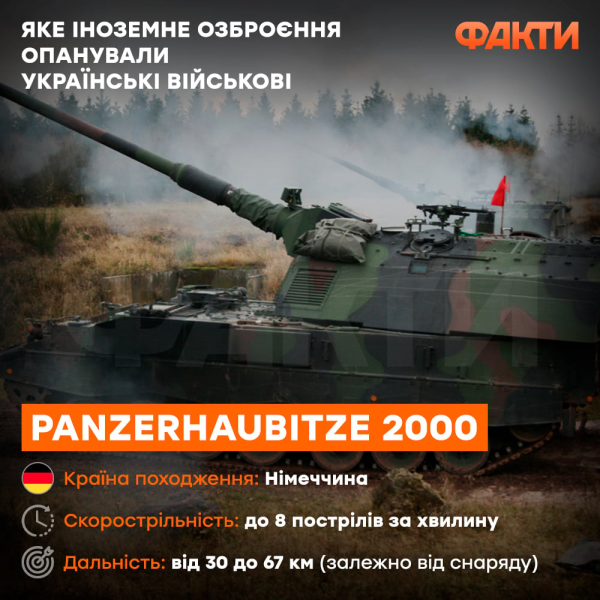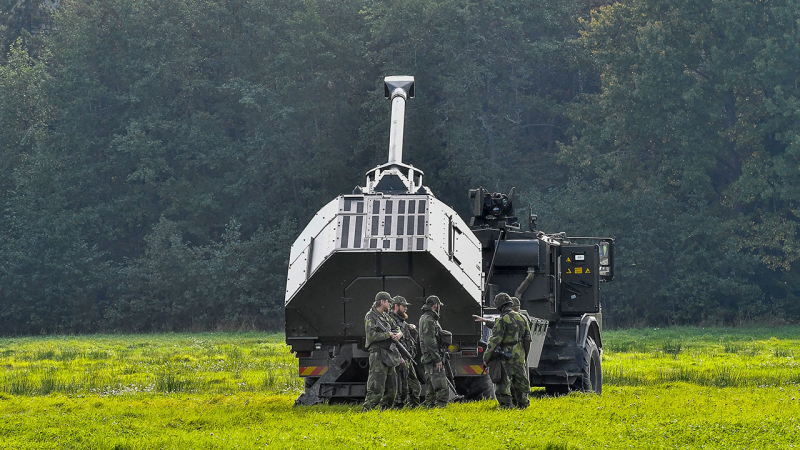
The Russian-Ukrainian war is a war of artillery and drones for both sides. At the beginning of the invasion, the Russians had huge stockpiles of shells in warehouses all over the Russian Federation, so they could afford the tactics of fire shafts, when a barrage of artillery burned everything: fields, villages, cities.
This year, Russia has already had noticeable problems with ammunition, although it still maintains an advantage on the battlefield. In addition, North Korea often supplies the Russian invaders with shells and missiles of poor quality.
First Deputy Minister of Defense of Ukraine, Lieutenant General Ivan Gavrilyuk said that now the ratio of artillery shells used compared to the winter of 2024 is 1 to 3 (previously 1:8). According to President Volodymyr Zelensky, before the Kursk operation, the enemy's advantage in artillery reached 1 to 12.
Now watching < p > In November, Deputy Commander of the Missile Forces and Artillery of the Armed Forces of Ukraine Serhiy Musienko said that now the gap in artillery rounds between Ukraine and Russia is 1: 2 — this is the basic figure. At certain periods of operations, this gap reached almost 1: 6 — 1: 7 in favor of the occupation forces. That is, if the Armed Forces of Ukraine fired conditionally 300-350 thousand shells, then the occupiers — up to 2 million per month of all calibers across the entire front.
For the Day of Missile Troops and Artillery, which, according to the new decree of the president, is celebrated on December 4, Fakty ICTV has prepared an article about what weapons we have and what the occupiers are currently fighting with.
What types of artillery exist
Artillery is divided into mortar, barrel, and rocket.
Mortar artillery in the Ukrainian army is represented by simple mortars from 60 mm to 120 mm – these are MP 60, MP 120, 2B11 Sani, automatic 2B9 Vasilek, UPIK-82, M120-15 Molot.
For example, mortar UPIK-82 is a Ukrainian development, can fire at a maximum of 4.1 km. It was developed since 2015, and has been in service since 2018. Mortar MP 120 is produced by the Ukrainian Armored Vehicles company, it has been in service since January 2022.

ukrarmor.com
Another mortar caliber 120 mm Ukrainian production is M120-15 Molot, developed on the basis of the Soviet mortar 2B11. In service since 2016.
Modern barrel artillery has a caliber of 152 and 155 mm.
The newest Ukrainian system is the self-propelled artillery unit (SAU) Bogdana. Its caliber is 155 mm (NATO standard). Development began in 2016. The Bogdana self-propelled howitzer, paired with the French Caesar, received its baptism of fire during the liberation of Zmeiny Island.
The Bogdana self-propelled howitzer is built on the KrAZ chassis, the rate of fire is 4-6 rounds per minute, the firing range is from 40 to 50 km (with rockets).
On October 30, 2024, Ukrainian President Volodymyr Zelensky announced that Ukraine is already producing almost 20 Bogdana self-propelled howitzers per month.

Ministry of Defense of Ukraine
Barrel artillery also includes the Soviet 152-mm howitzer 2A65 Msta-B, 152-mm howitzer Giatsint-B, SPG Msta-S, self-propelled gun 2S5 Giatsint-S, 152-mm SPG 2S3 Akatsiya, 122-mm 2S1 Gvozdika. In addition, the powerful 203-mm self-propelled gun 2S7 Pion.
< p > It is worth noting that all these installations are in service with both the Armed Forces of Ukraine and the Russian army.
< h2 > Western barrel artillery
< p > American 155-mm SPG M109 Paladin. After the start of the war, Ukraine has been armed with both American and European models, in particular the Norwegian modification of the SPG M109A3GN, the British – M109A4BE. Latvia also gave us their M109A5OE.
Panzerhaubitze 2000or PzH2000 is considered one of the best SPGs in the world. Ukraine received 28 PzH2000 units in 2022 alone – 14 from Germany, 6 from Italy, and 8 SPGs were transferred by the Netherlands. By the way, Western partners volunteered to help repair damaged vehicles. For example, Lithuania took some of the SPGs for repair.

In January 2023, it was reported that production of RCH-155 wheeled self-propelled guns for Ukraine had started in Germany. The SPG is equipped with a turret from the Pzh2000 howitzer, and a chassis from the Boxer armored personnel carrier.
Ukraine's Western partners also transferred to our military: AHS Krab (Poland), Caesar SPG (France), Zuzana howitzers (Slovakia), Archer SPG based on the Volvo A30D chassis, British-American M777 towed howitzers, and Czech 152-mm ShKH vz.77 DANA SPGs.

SPG Archer. Photo: Getty Images
In early October, it became known that the Ukrainian Armored Vehicles company and the Czechoslovak Group (CSG) signed a package of documents on the joint production of 155-mm shells. They plan to start manufacturing the ammunition as early as 2025.
Rocket artillery
From the Soviet legacy, Ukraine inherited:
- Grad MLRS: deployment time is 3-4 min/, range of destruction is 40 km, caliber is 122 mm;
- BM-30 Smerch: caliber is 300 mm, range of destruction is 70-90 km, area is up to 70 hectares, deployment time is 3 min/;
- BM-27 Uragan: caliber – 220 mm, 16 rockets weighing 280 kg each, salvo time – 20 s;
- MLRS Vilkha: Ukrainian development based on 9K58 Smerch. Missile weight from 170 to 250 kg, caliber – 300 mm, operational range – up to 100 km;
< li > < strong > MLRS Bureviy : Ukrainian development to replace the Soviet Uragan. Caliber – 220 mm, chassis from the Czech Tatra, 16 barrels with shells of 280 kg.
< p > After the start of the full-scale invasion, Ukraine received from the United States < strong > MLRS HIMARS . Main characteristics: six 227 mm MLRS projectiles or one 610 mm ATACMS rocket.
Artillery ammunition from the Russians
President Volodymyr Zelensky noted that in 2024, North Korea transferred 3.5 million artillery shells to Russia. However, as military expert Alexander Kovalenko noted in a commentary to ICTV Fakty, Russian troops receive ammunition of rather poor quality from their ally.
They may not explode, or they may explode in the barrel of the howitzer itself. Such shells have poor gunpowder, which also affects the barrels: they quickly become dirty, and this reduces the accuracy and reliability of the shot. Due to poor quality, barrel artillery fails faster.
< p > According to Alexander Kovalenko, now the Russians use mainly towed (non-self-propelled) artillery at the front: howitzers, various artillery mounts. Such equipment has worse accuracy and firing range.
< blockquote > < p > — The Russians took most of these howitzers out of storage. This is what was stored in warehouses for 50, and even 70 years, — says the expert.
Equipment that had already worked out its corresponding resource was sent to warehouses. It is worth noting that each barrel has its own guarantee of the number of shots, its own resource. Therefore, these barrels cannot be overloaded, because they can simply explode during the shot itself.
< p > Therefore, the occupiers limit the number of shots, accordingly, the number of hits on our positions decreases.
< h2 > The shortage of heavy artillery among the Russians
< p > As for modern artillery, the Russians have very little of it. For example, they are capable of producing 152-mm self-propelled artillery units Malva or self-propelled howitzers Msta-S, but units per month are somewhere around 5-6. This is very little for war. Therefore, in order to fully compensate for the losses every month, the occupiers remove hundreds of Soviet towed artillery from storage and, after restoration, send them to the front.
According to Alexander Kovalenko, today the enemy already has problems with tanks. They remove two or three tanks from warehouses and assemble one from them. Problems with combat armored vehicles are gradually emerging.
— In 2025, the Russians will have a significant problem with artillery. The enemy has even begun to use fewer tanks. And towing equipment is gradually running out, because the Ukrainian Armed Forces are destroying hundreds of them. Therefore, rather rare models are already appearing at the front, which were not so numerous even in the Soviet Union, — the military expert notes.
Does the enemy use barrages
According to Alexander Kovalenko, the invading army is trying to use the tactics of barrages in certain areas that are very important to them. Where the enemy needs it, he concentrates a large amount of artillery, which is provided with ammunition.
— But they can no longer repeat the barrages that were in 2022, at the beginning of a full-scale war, they do not have the appropriate resource, — emphasizes the expert.
By the way, the Soviet army used the barrage tactics during World War II.
You can only resist barrages by destroying enemy artillery. For example, high-precision 155-mm guided artillery ammunition M982 Excalibur is guaranteed to reach the target.
The German counter-battery radar COBRA, which calculates the coordinates of positions, also helps to accurately hit enemy equipment. The COBRA radar can detect the location and classify up to 240 enemy guns at a distance of up to 100 km in 2 minutes. This radar is considered to be almost the best in the world.
The same actions are performed by the American artillery reconnaissance radar systems AN/TPQ-48 (modification of AN/TPQ-49), as well as counter-battery radars AN/TPQ-36.
For example, for the AN/TPQ-36 radar, the deployment and preparation time for radar operation is 15 minutes, the working trajectory is up to 24 km.
Ukrainian artillery
According to Alexander Kovalenko, the Armed Forces of Ukraine constantly need shells and artillery mounts from Western partners. But we have also increased the production of the Bogdan self-propelled guns. So, at the beginning of the year it was 6-8 units, and now it is up to 20 units.
— Despite the fact that we are increasing production, it is still not enough. The Russians are compensating for their losses in hundreds. Therefore, without stable support from international partners, we will not be able to achieve any kind of parity, — notes the military expert.
Although we have more advanced, modern and mobile artillery, we are inferior to the Russians in quantity.
Examples of successful work of our artillery
Even at the very beginning of the full-scale invasion, Russian equipment in the Chernigov and Kyiv regions went in columns, because it did not expect resistance. However, this is exactly how the occupiers became an ideal target for our aviation and artillery.
Thus, at the end of February 2022, near Makarov in the Kiev region, our military covered a column of enemy equipment with fire.
In October, soldiers The 30th separate mechanized brigade named after Prince Konstantin Ostrozhsky showed how they struck the enemy with self-propelled guns and cannons in the Bakhmut direction.
Near Soledar, the occupiers tried to storm the positions of the 30th separate mechanized brigade on two BMDs and with the support of a tank. However, in half an hour, our soldiers burned all three units of enemy equipment with ATGMs.
On October 28, 2024, soldiers of the 79th separate airborne assault Tavricheskaya brigade showed how they repelled an enemy attack in the Kurakhovsky direction. Our soldiers destroyed more than 15 units of equipment and eliminated almost 50 occupiers.
On October 6, the 10th Edelweiss Mountain Assault Brigade reported repelling a Russian mechanized assault in the Donetsk region. The occupiers lost 15 to 25 men and 5 vehicles. The enemy launched an assault from the occupied village of Veseloye and tried to break through Ukrainian positions.

